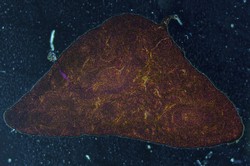The relation between brown fat and pancreatic beta cells
Supported by EU funding, the BETABAT(opens in new window) (Development of novel treatment strategies based on knowledge of cellular dysfunction in diabetes) project addressed cell dysfunction in diabetes. This four-year project tested the hypothesis that dysfunctional metabolic crosstalk between beta cells and BAT aggravates cellular stress in diabetes. Possible interventions to help BAT and beta cells to regain homeostatic control will be based on organelle diagnosis, both from a cellular and systems angle. A pilot clinical trial set up by BETABAT is the first of its kind that tests individualised strategies for type 2 diabetes. Scientists screened for small molecule probes, and tested novel modifications of known drugs, viral vectors and transgenic animals to genetically validate targets. BETABAT has achieved considerable progress in several directions. The project showed that the markers of endoplasmic reticulum (ER) stress are present in islets from patients with type 1 and type 2 diabetes mellitus. Researchers characterised in detail the crosstalk between ER stress and inflammation-induced apoptosis in models of diabetes. Both immune and metabolic stress causes death of pancreatic beta cells via activation of the mitochondrial or intrinsic pathway of apoptosis. The researchers also developed models to study apoptosis in brown adipocytes using mitochondrial toxins and ER stressors. Developing the concept that BAT activation protects against diabetes, the project identified two new adipokines, secreted by the adipose tissue. Increasing BAT activity in mice with impaired insulin secretion improved their metabolic profile. BETABAT demonstrated that chemical chaperones (modulators of ER stress) protect mouse models of type 1 diabetes against hyperglycaemia. This may lead to clinical trials in the coming years. Importantly, BETABAT has also obtained novel data indicating that candidate genes for type 1 diabetes regulate beta cell responses to viral infections, pointing to novel avenues to protect these cells in early disease. BETABAT has produced 140 peer-reviewed publications in high-impact journals. Results have also appeared in lay media, press releases and interviews across Europe and America. This novel and global view of a complex disease has important therapeutic implications, especially with 55 million people in Europe alone having diabetes.







